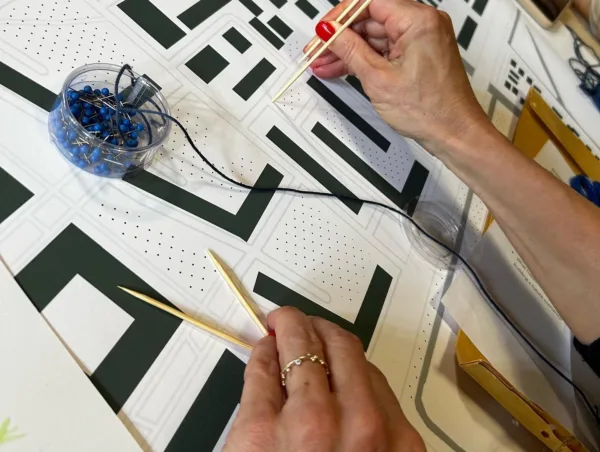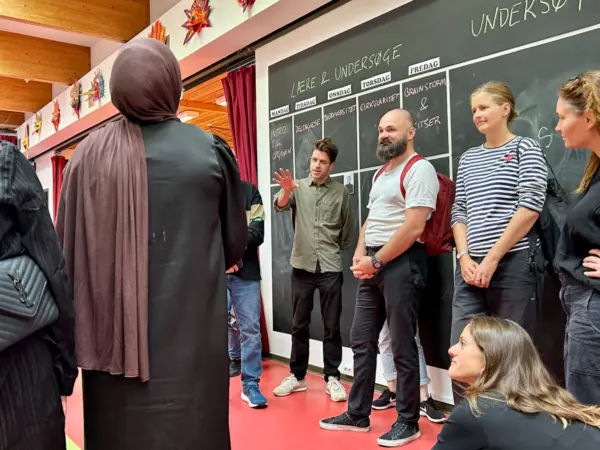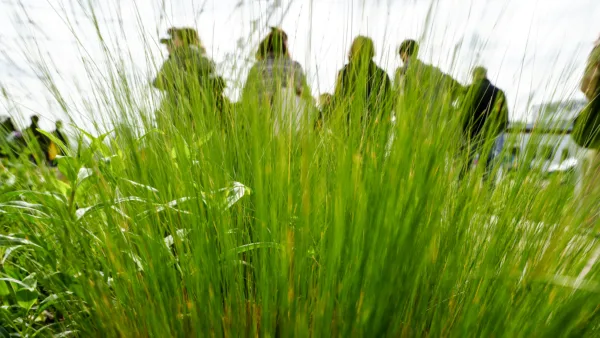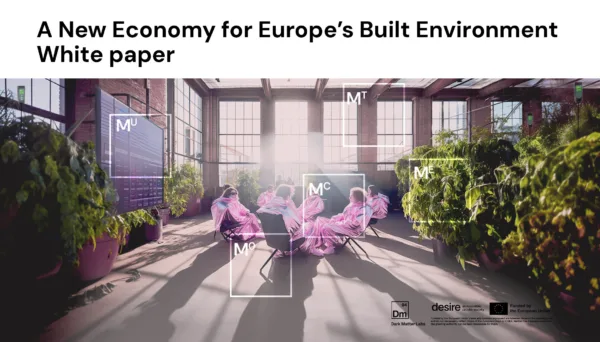Author: Vibeke Grupe (Danish Association of Architectural Firms) Danish Association of Architectural Firms (Danske Ark) is a trade association with approx. 700 member firms, equivalent to 95% of all Danish architectural firms. The organization represents the interests of architectural practices in Denmark and works towards promoting the architectural profession, providing support and resources to member firms, advocating for relevant policies, and fostering collaboration within the industry. Danske Ark has been involved in the Desire project as an expert organisation.
The opinion is part of the publication: Harre et al. (2024), Harre, Olivia T., Asbjørn Christian Carstens, Daniel Hermansen, Lea Holst Laursen, and Hans Jørgen Andersen. “Narratives of Irresistible Circular Futures.” Department of Architecture, Design and Media Technology. Denmark: Aalborg University, 2024.
The long-term vision for a Circular Economy in the building and refurbishment industry focuses on utilising regenerative energy sources, maximising the use of existing building resources, and avoiding primary production of building materials. This approach addresses climate challenges, resource scarcity, and biodiversity crises, ensuring a better environment for future generations.
Achieving this vision requires a systemic shift where circular principles are integrated across the building and refurbishment value chain and social strata and sectors. Concrete goals for reduction, preservation, recycling, and regeneration are needed to create common objectives.
Decoupling growth from the consumption of natural resources and reducing energy use is essential to minimise environmental impact, resource loss, and structural changes. Engaging civil society is crucial for creating the movement needed for this transformation, making the human-centred social dimension of sustainability as important as environmental and economic aspects.
Without this focus, the transition will not happen. Social value in construction and renovation projects encompasses the utility, significance, and benefit they bring to society, the economy, and human life. Without assessing social value creation and impacts, longterm social solutions might not be prioritised, leading to negative consequences for building operations and usability over time.
However, integrating sustainability in building and refurbishment is challenging due to current silo thinking, linear processes, and a reluctance to invest in sustainable solutions due to unclear terminology and changing fashions. Related to this is the conventional understanding of social aspects, which suggests that such aspects must be quantifiable to be addressed. In the worst-case scenario, this could mean that the quality of construction and renovation is not improved.
The Desire initiative has explored user involvement in integrating cultural aspects of art, design, and architecture early in the design phases, which is uncharted territory for all involved parties. This exploration aims to verbalise requirements that enable the evaluation of social value creation from a broader perspective.
Tools and methods to support evidence-based decision-making and assess value creation along the value chain, especially in design processes, need to be developed and tested.
The future role of architects in urban transformation projects, especially given the experiments and activities in the Desire initiative, including the involvement of three architectural firms at three Danish Desire sites, should evolve around this.
Architectural companies have a significant role in the regenerative transition of the building industry through their ability to rethink systems by design and facilitate participatory/co-design processes that can accelerate and improve the transition’s efficiency. They must meet this challenge to strengthen their influence and market share while enhancing overall cultural heritage.
Approach
A circular process model was used to define optimal user involvement times and methods in Desire, visualising how early user involvement in the ‘Screening’ and ‘Brief’ phases can form a basis for ongoing user engagement (Social Commissioning) throughout the design and building process. This model also supports post-occupancy evaluation during the use phase.
The model helped recruit three Danish architectural expert companies to identify and verbalise end-user needs, determine who could fulfil them evaluatively, and specify the necessary expertise. The companies possess expertise in CO2 reduction, circularity, biodiversity, inclusion, user-driven processes, transformation, and Post Occupancy Evaluation (POE). Notably, all three firms are multidisciplinary, employing professionals
like anthropologists, sociologists, geographers, landscape architects, and biologists alongside architects and planners. They were engaged in three Danish pilot projects to test end-user involvement in sustainable area development decision-making.
The goal was to articulate services for transforming an existing linear phase model into a future circular phase model, viewing building and refurbishment from a life-cycle perspective. It also aimed to evaluate value creation to clarify its significance, enhance design processes, and provide opportunities for assessing social value creation in pursuit of the Irresistible Circular Society, Desire’s guiding work ambitions.
This process aimed to allow companies to define strategic measures in the early project phases and evaluate efforts to develop attractive cities and buildings. These efforts engaged citizens in a holistic, circular understanding and behaviour in built and natural environments.
The architectural companies were tasked with delivering generic recommendations and principles for creating better social and biological conditions, using aesthetics as a design driver at the Desire sites, and describing possible evaluation efforts with indicators and points. They also provided goal-oriented input demonstrating how recommendations and principles translate into specific projects. For example, in one of the projects, the architects went on a walk in Kalundborg with residents to look at urban furniture and spatial sequences.
During the walk, they discussed immediate thoughts and ideas, which the architects later tested 1:1 in mock-ups together with the participants to assess what could form the basis for the specifications in the upcoming construction program.
In another project, the architects engaged local schoolchildren in workshops to brainstorm ideas for park areas and play spaces, aiming to address requirements related to the experience of biodiversity and the use of recycled building materials in the outdoor areas between the buildings.
Evaluation interviews with Desire project management, pilot project leaders, and the involved architectural firms revealed that:
- End-users value architects for their holistic thinking and ability to communicate complex issues.
- End-users feel better prepared to specify and answer requirements and plan future processes.
- User involvement procedures have improved.
- Knowledge about fields crucial for circular societies, such as biodiversity and regenerative design, has advanced, facilitating dialogues between clients and architects about value creation.
- Architectural firms are better at listening to clients and users, translating complex issues into visuals, and supporting decision-making in planning processes.
- Firms are continually learning to meet the complexity of client and user requirements.
- Architectural firms reflect on adapting to clients and acting as facilitators, mediators, and change agents.
These insights support the potential for social value creation and the importance of addressing such issues in strategic planning and follow-up through systematic evaluation - the Desire intervention aimed to assess the feasibility of transforming existing linear phase models into circular ones. The focus should be on considering building and refurbishment from a life-cycle perspective to develop the architectural profession’s skills and competencies to evaluate value creation.
The architectural profession can advance by emphasising research and evidence, particularly in creating social value. By gathering data on user experiences, energy consumption, and productivity, architects can enhance their credibility and distinguish themselves within the value chain.
For instance, architects measured how many local residents moved through an area, where they walked, how fast they moved, where they paused, and how long they stayed. This analysis was conducted to evaluate the area’s attractiveness and to define it as a functional requirement in the forthcoming construction program.
Additionally, fostering interdisciplinary collaboration between architects and experts such as anthropologists, sociologists, geographers, and biologists is essential.
This collaboration helps document the significance of social and human science initiatives, which is critical for social commissioning and post-occupancy evaluation. Strengthening these connections further enhances the profession’s capacity to assess and understand the social impact of architectural designs.



